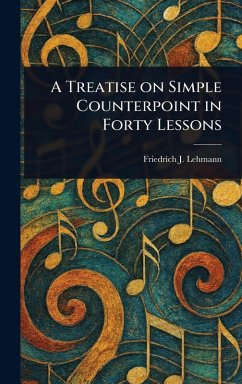Nicht lieferbar

Tonal Counterpoint for the 21st-Century Musician
An Introduction
Written in a style that is clear, simple, and informal writing style, Davidian artfully mixes the history of counterpoint with an outline of its structure, placing musical examples from J. S. Bach side by side with those from The Beatles to illustrate the universality and currency of counterpoint in music analysis and composition.













